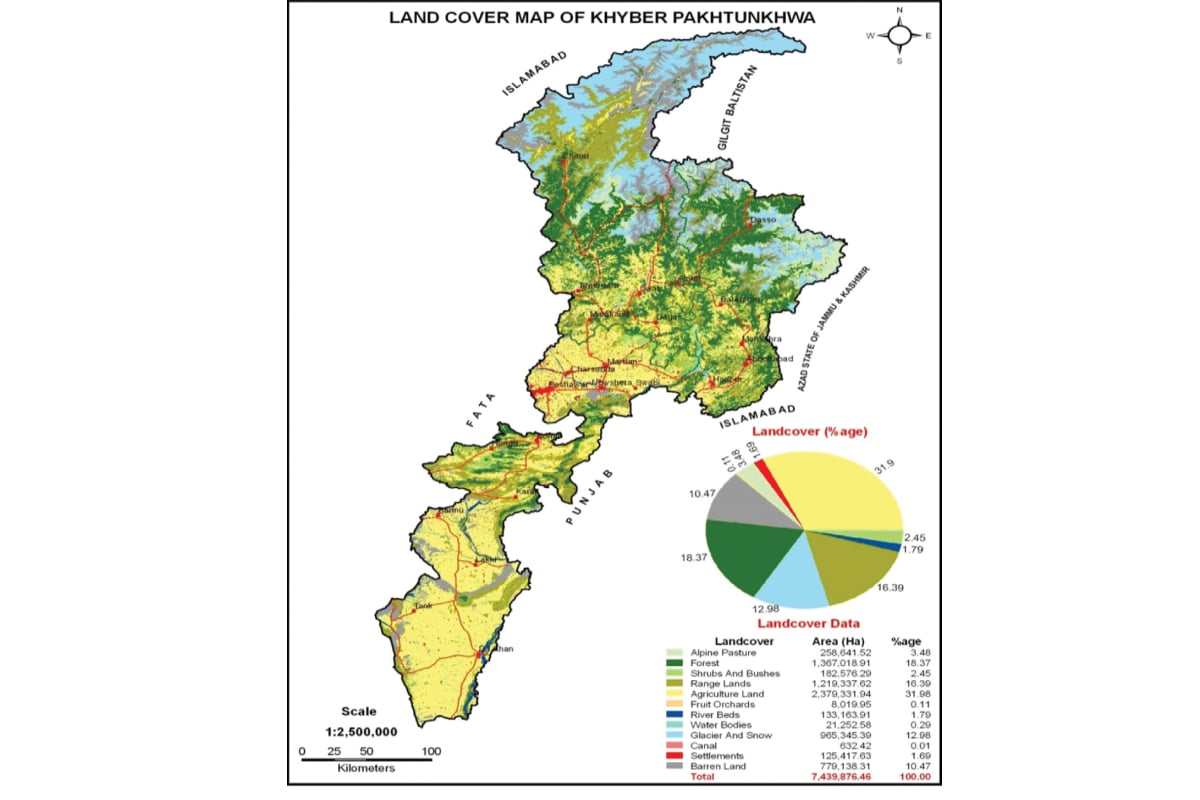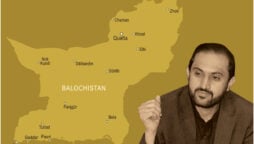
KP Plans Climate-Resilient Farming
The WB-funded plan aims to convert 88 million wild olives into fruit-bearing trees
The government of Khyber Pakhtunkhwa (KP) has embarked on a massive Rs 2.89 billion climate-resilient horticulture programme to convert more than 88 million wild olive plants into fruit bearing trees through grafting, official documents show.
The programme, which is funded by the World Bank, aims to save more than Rs 01 billion in annual imports of edible oil, which at the moment stand at somewhere around Rs 3.2 billion. The plan also includes cultivation of saffron over 40 acres of baron land, which will further add to annual revenue.
According to Pakistan Bureau of Statistics estimates of 2011, Pakistan’s edible oil production is 0.680 million metric-tons, and an amount of $2.2 billion is annually spent on imports of edible oil. Authorities hope that, given an estimated olive oil yield of 2,000-kg per every 100 olive trees, this expense could be considerably reduced.
It will also boost KP’s climate resilience in the wake of adverse climate change, say experts, and will help ensure food security as well as create direct and indirect livelihood opportunities for vulnerable populations.
Global Climate Risk Index 2021 put Pakistan as the 8th most vulnerable country at risk of climate change. The KP province, meanwhile, is said to be vulnerable to a range of slow and rapid onset hazards like floods, droughts, heat-stress, pest attacks, disease outbreaks, avalanches, landslides, glacial outbursts and earthquakes.
The KP Climate Change Policy 2016, and its Food Security Policy of 2022, both stress the need to improve resilience to climate and other stress factors. An official document seen by BOL News says that KP’s Climate-Resilient Horticulture Interventions Programme (CRHIP) aims to develop model orchards and climate-smart irrigation, restore degraded land and incentivize a shift towards climate-smart horticultural production through olive grafting in communal lands and the cultivation of saffron on wastelands.
KP’s economy is predominantly agrarian, with 70 percent of the population living in rural areas. It contributes upto 10 percent to the country’s Gross Domestic Product (GDP). Out of its total land area of 10.77 million hectares, approximately 1.8 million hectares is under cultivation. Its main crops include wheat, maize, rice, sugarcane, vegetables, fruits such as peaches, plums, apricots and apples, and citrus trees.
Farm sizes in KP are amongst the smallest in Pakistan: 81% of farms are smaller than 5 hectares or 12.36 acres, with a single hectare of farmland supporting an average of 18 people. Small farm sizes and low productivity contribute to food insecurity, affecting nearly 30% of the population province-wide and up to 62% of those in the most vulnerable districts, according to official data.
It says that fruit orchards are a high-income activity and also contribute to reducing carbon dioxide in the atmosphere. In addition, they promote biodiversity by offering friendly atmosphere to a range of wildlife including bees, birds and insects.
A senior official of the KP Forest Department, Rashid Hussain, told Bol News that the project is of great importance not only to boost KP’s economy but also help fight climate change and ensure food security.
He said that under the plan the Agriculture Department will set up orchards and graft 645,000 olive trees grown on accessible sites with improved varieties of oil yielding olives in 14 forest divisions across the province.
This will be followed by saffron cultivation on chosen tracts and the setting up of High-Efficiency Irrigation System (HEIS) paraphernalia on 1-5-acre farms.
BOX-1: According to the document, sub-tropical broad leaved evergreen forests are distributed in various districts of Khyber Pakhtunkhwa as per detail given:
| S.# | Districts | Total Forest Area (ha) | Percentage | Subtropical Broad-Leaved Forests | |
| Area(ha) | Percentage[1] | ||||
| 1 | Haripur | 42491 | 23% | 23270 | 12.7% |
| 2 | Abbottabad | 67173 | 37.6% | 3858 | 2.1% |
| 3 | Mansehra | 234460 | 56.5% | 9095 | 2.2% |
| 4 | Battagram | 79563 | 54.3% | 1570 | 2.2% |
| 5 | Buner | 30434 | 17.5% | ||
| 6 | Lower Dir | 45247 | 26.7% | 2106 | 1.2% |
| 7 | Shangla | 69235 | 49.9% | 1756 | 1.3% |
| 8 | Swat | 298341 | 55.3% | ||
| 9 | Malakand | 6775 | 7.2% | 4486 | 7.2% |
| 10 | Nowshera | 37560 | 20% | 33869 | 18.6% |
| 11 | Kohat | 82001 | 27.6% | 82001 | 27.6% |
| 12 | Hangu | 8213 | 6% | 8213 | 6% |
BOX-2: To conceptualize the significance of olive grafting, a business model of proposed 0.645 million wild olive grafting is summarized as under:
Business model/Economic return of 0.645 million grafted olive plants
| Particulars | Unit | Quantity |
| Average fruit Production per plant | Kg | 20 |
| Average Oil production/plant | % | 12% |
| Oil production/plant | Liter | 2.4 |
| Price/ Litre | Rs. | 2200 |
| Income/plant | Rs. | 5008 |
| Olive Oil production (0.645 million Plants) on 6th year | Litre | 1.548 million liters |
| Income (0.645 million Plants) after 6th year | Rs. | 3405.6 million |
| Total Income after 10 years | Rs. | 17028.00 Million |
Catch all the National Nerve News, Breaking News Event and Latest News Updates on The BOL News
Download The BOL News App to get the Daily News Update & Live News.












 Read the complete story text.
Read the complete story text. Listen to audio of the story.
Listen to audio of the story.